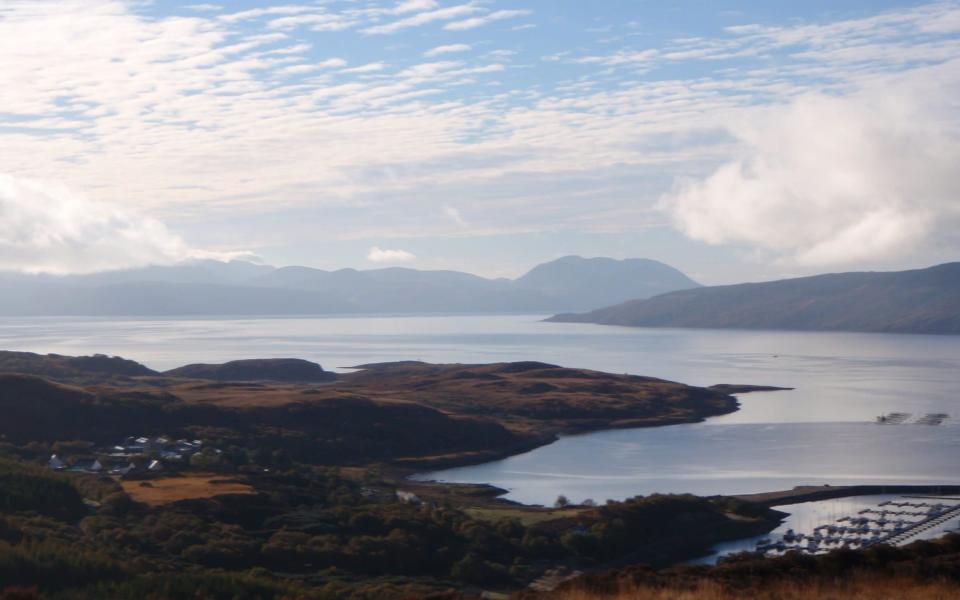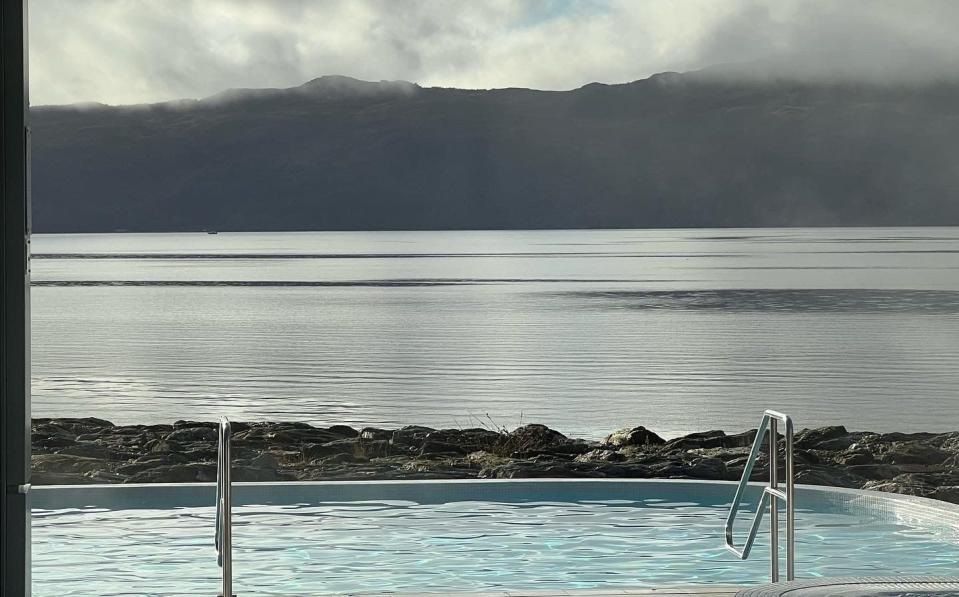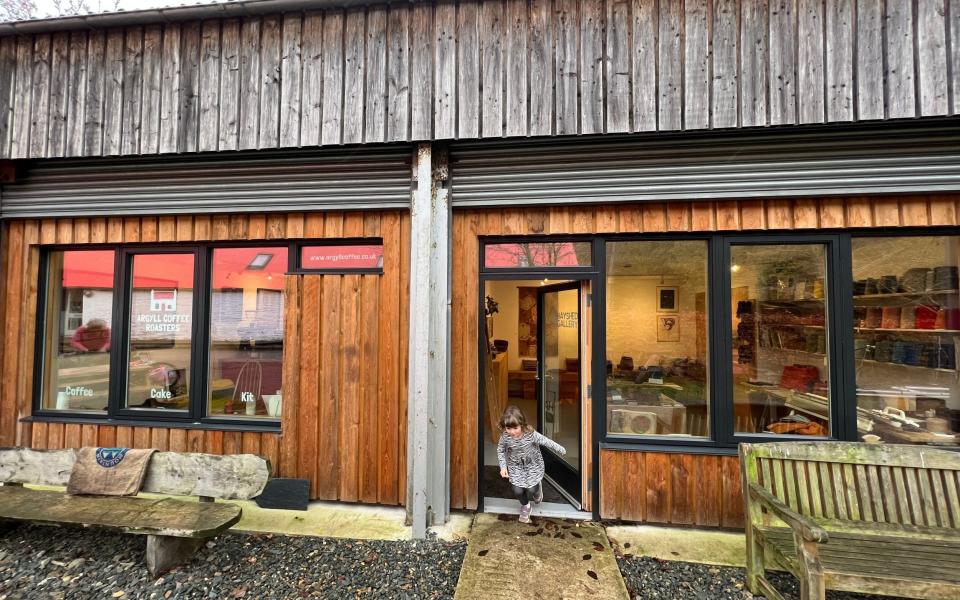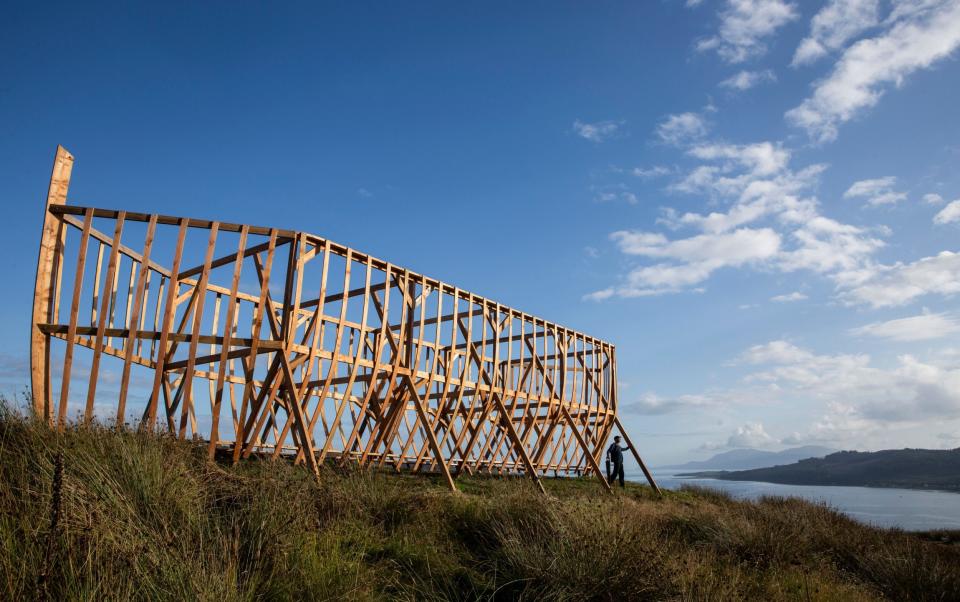Why you should visit Scotland's forgotten peninsula

Eyebrows were raised when some of the COP26 delegates embarked on a pilgrimage to an ark forged on a forgotten Scottish peninsula. But local artisan coffee roaster Eve MacFarlane wasn’t surprised. “Cowal has long been a place of refuge, an escape, our own wee ark adrift in the Clyde,” she explains, topping off a perfect cappuccino with flakes of chocolate and waving to the owner of the new art gallery next door.
Arriving in style – on a sea plane – the Cowal Peninsula unfurls widescreen, an oasis on a biblical scale. I bash down at Portavadie on mist-shrouded Loch Fyne, Scotland’s longest sea loch, famous for offering up a rich bounty of eponymous oysters; mussels and pollack too. The low-slung hills of Kintyre hang on the horizon, more dramatic than any syrupy Paul McCartney ballad. To the south, Arran’s Alpine-esque jagged peaks preside over waters once alive with Viking longships and Celtic kings.
These Firth of Clyde waters once beamed with the smiles of half of Glasgow too, as a flotilla of packed paddle steamers thrashed holidaymakers ‘doon the watter’; long before mass jet travel diverted them to the Spanish Costas. The Cowal sea lochs – sinewy aquatic fingers, first gurling into life in the Highland hills, then gaining volume seeking the Atlantic – still echo with Glaswegian ghosts. The wooden stilts of long collapsed piers invite moody photography across the lochs Long, Striven, Riddon and Fyne that lend Cowal a cinematic grandeur; most recently captured on the small screen in the BBC’s ‘Vigil’ series.

For decades Cowal has been the Clyde’s sleeping peninsula, not even summoning up the energy for jealousy as the neighbouring Isle of Arran has blossomed as a tourist destination. Projects and promotions have come and gone the same way as the old ferry piers, but now Cowal is reawakening. Most strikingly here at Portavadie. I landed a couple of years ago by boat on the wild coastline to the south with a mate from London. Yomping through waist-deep bog I promised him a latte in the slick resort just over the hill in the middle of nowhere – I won’t tell you what he shouted to express his disbelief.
Portavadie is unbelievable. It started life – though it never took off – as an oil industry installation, its dredged basin never fixing a single rig. It was going the way of the piers and paddle steamers as the damp tentacles of nature encroached. Then came millions of pounds of investment and irrepressible managing director Iain Jurgensen. A decade ago Iain asked me to write about his ‘resort’. I said I couldn’t as it didn’t exist. It was a slick 200-berth marina in search of a resort with – admittedly gorgeous – modern apartments with saunas and floor-to-ceiling windows overlooking what yachts there were.
Iain doesn’t need to ask me to hail booming Portavadie a resort now, not when I’m sitting with him in the spa complex. It sports a heated infinity pool – a candidate for the UK’s most dramatic – right out on Loch Fyne, and a brace of bubbling spa pools. Add a restaurant serving boat-fresh langoustines and wild venison, and Portavadie is an oasis for all, that – judging by the accents in the infinity pool – is diverting Glaswegians back from the Costas.

Success on Cowal for Iain didn’t just come through throwing money at Portavadie. He explains: “We soon realised it was all about the people. We had not only to attract people from all over the world to work here, but train and retain local staff too. Keep youngsters in Cowal, give them a reason to live and thrive.” And they have, the staff quarters currently being expanded. It’s not just here, though, as I find green shoots nosing up throughout Cowal.
Curling south I resist the temptation to hike back to Ostel Bay – there is no road – to the sweeping sandy beach that unfurls on a spectacular spot on the southern tip of Cowal. Instead I gun back up the east coast with the Isle of Bute looming. Then I meet Eve and her perfect cappuccinos. Her Argyll Coffee Roasters was set up in Tighnabruaich in 2018, and they’ve just opened a café here at Carry Farm with local produce from Cowal’s Northern Lights Cakery and Wild Kitchen. She is just across the road from the Argyll Botany Company and joined at the hip with the Hayshed Gallery. Cowal is not so much on another planet from supermarket hegemony as in another galaxy.

Fiona McPhail is typical of the local spirit. Not content with running a farm and a successful sailing school with her husband, she’s opened the new Hayshed. “Cowal is such an inspiring place,” she smiles, casting an arm out over the rocky shoreline and the land she raises her flock of Hebridean sheep on, using their wool in her knitted textiles and tanning skins on site. “Cowal feels remote, in a very good way. You feel far from care and stress, but not as distant as out on the isles. It’s a creative place too.”
Fiona is right. Tighnabruaich, just to the north, bursts with new energy. And not just that 20m-long wooden Ark of Argyll, which peers from its lofty perch, crafted by artist David Blair, who tells me it is to “raise awareness of the scale and urgency of the climate and ecological emergency”. Next door the Kilfinan Community Woodland shows what can be achieved when local communities run a patch of their own land – it’s brilliant for children and big kids alike with play areas, wooden huts and barbecue spaces. The poshest hotel in town – the Royal An Lochan – has new owners and The Hollies has emerged this year as one of Scotland’s most decadent self-catering escapes, a grand sandstone dame sleeping up to 18 in proper luxury.

I hear of a new bijou tea plantation and more hipster-ish cafés, but any concerns that Cowal is becoming more Shoreditch than rural Scotland are trod underfoot by the newly expanded Cowal Way. Piggybacking on the renown of the famous loch, it’s now the Loch Lomond and Cowal Way. It cuts 57 miles through the wild and wildly beautiful peninsula. Galleries and biscotti are eschewed for the elemental pleasures of battling through thick forest, hiking up rugged knolls and plunging down steep glens.
I spend a morning tackling a coastal stretch up to the top of the Kyles of Bute – easily one of the most scenic places in Scotland, and I don’t say that lightly having spent two decades travelling around my nation. It’s a lung-filling, spirit-soaring pleasure. It puts me in the mood for more coffee. And cake. I push on east, bypassing Dunoon, Cowal’s only town. It’s the home of the superb Argyll Smokery and apparently a favourite of Damon Albarn, inspiring his song ‘Selfish Giant’. It’s also my mum’s birthplace.
I suspect that both of these hallowed figures would forgive me for dissing Dunoon if they took a table at the brilliantly refashioned The Blairmore, a trim pier-side gallery and café just to the east on Loch Long, with homebaked cakes, local art and ultra-local produce. As I sit with my imagined mother and a Britpop star the scene gets even more surreal as she joins us, barrelling into life. A real-life time machine that is. The PS Waverley, the world’s last ocean going paddle steamer. The Waverley is back; right here gleaming in black and white topped with those unmistakable scarlet-red funnels.
The Waverley’s paddles churn up the aquarium clear waters, her well-oiled (recently overhauled) engines transport me back to the accordion-fuelled feverish days of the Glasgow Fair holidays. Today the Waverley is once again helping those looking to escape; a metal hulled, steam-powered ark. In an instant old and new combine in this oasis of ghosts and re-imagined arks, of reborn industrial white elephants and farms-cum-art galleries. The hills look less brooding now; the mist is clearing. Cowal may not for long remain Scotland’s forgotten peninsula.
The details
Loch Lomond Sea Planes: lochlomondseaplanes.com; Portavadie: portavadie.com, rooms from £129; Tourist information: wildaboutargyll.co.uk. Read more: Telegraph Travel's guide to the best hotels in Scotland.


